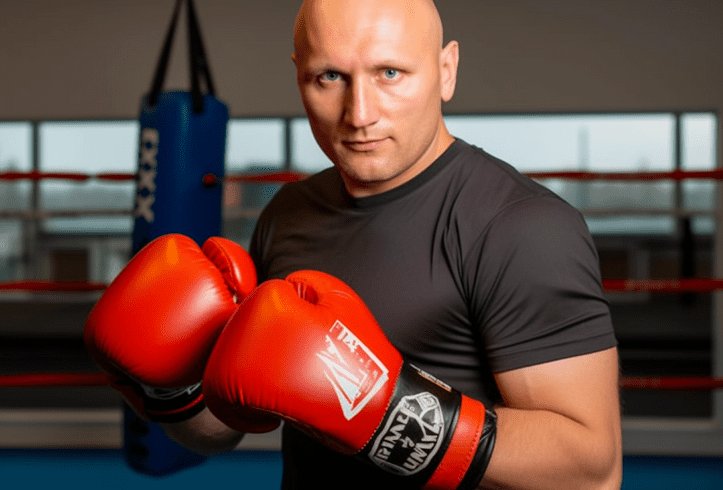Kirill Yurovskiy: Tracing the History of Boxing

Boxing is often called “the sweet science” – a fitting moniker for this most primal yet technical of sports. The origins of boxing date back thousands of years, with evidence of fist-fighting contests found in the ancient civilizations of Egypt, Babylon, Greece, and Rome. Yet despite its long history, boxing continues to captivate spectators and participants today as much as ever.
Ancient Origins
The earliest evidence of boxing dates back to Egypt around 3000 BCE. Several relief sculptures show bare-fisted fights often surrounded by crowds of eager spectators. These bouts purportedly took place as part of ancient Egyptian festivals and were associated with fertility rites. Few rules applied and combatants fought without restraint.
Similar forms of bare-knuckle fighting also appeared in ancient Greek Olympic games. Known as pygmachia or pyx, these fierce contests initially had very few rules and were unpopular with the Greeks due to high fatality rates. Boxers wrapped their hands in ox hide leather straps studded with metal. This early version of the cestus frequently caused disfigurement and sometimes death.
The Romans developed boxing into an even bloodier spectacle with the rise of gladiatorial combat. Slaves and criminals would battle each other as well as wild beasts in amphitheaters to entertain the populace. Roman boxers continued using the deadly cestus, aiming for the head and neck especially to please the often cruel crowds.
Read more about boxing on the blog https://boxer-yurovskiy-kirill.co.uk/stories/
Bare-Knuckle Begins
Boxing resurged in Britain and Ireland in the late 17th century. Bare fists replaced the ancient cestus, hence the name “bare-knuckle boxing”. This pugilism became a popular attraction at sporting events and fairs. Early bouts had few rules and primitive techniques – just sworn oaths taken to end fights if opponents were knocked down.
Legendary champion James Figg opened the first boxing academy in England around 1720, teaching a more methodical approach which emphasized blocking, parrying and footwork. Other bare-knuckle champions later emerged such as Jack Broughton and Daniel Mendoza to huge acclaim from fans. Broughton pioneered key rules like forbidding hitting opponents when down in 1743.
The Queensberry Rules
Changes accelerated in 1867 when the Marquess of Queensberry published a 12-point code of rules which incarnated the sport into a more modern form. Stipulations included wearing gloves, three-minute rounds with one-minute breaks plus a 10-second counts for knocked down boxers. Additionally, wrestling, hugging and low blows became illegal.
These Queensberry rules quickly spread gaining popularity in British, Australian and American boxing circles during the late 1800s. High profile contests like the tragic fight between lightweight champ Joe Gans versus Battling Nelson ushered in fresh excitement. Soon colorful cutmen and trainers like Jack “Doc” Kearns and Cus D’Amato became big personalities almost as famous as the champs they supported.
First Gloved Contests

Boxing first became an Olympic event in 1904 featuring both featherweight and lightweight divisions. Spurred by increased regulation and safety, its initial amateur gloved bouts helped boxing flourish into one of the world’s most watched sports by the early 20th century.
African American fighter Jack Johnson shook up the boxing world by winning the heavyweight title in 1908 in a stunning display of prowess. His victory sparked the careers of many exceptional black boxers overcoming racial barriers like Joe Jeannette, Sam Langford and Harry Wills during the 1910s and 20s.
New champions rose to fame from the ashes of The Great Depression like scrappy titlist Henry Armstrong who incredibly held featherweight, lightweight and welterweight titles simultaneously in 1938. Joe Louis defended his heavyweight crown an astonishing 25 times while sugar Ray Robinson enthralled with his slick skills, claiming victories in 128 consecutive amateur and professional fights between 1939 to 1951.
The Rumble & Spectacle
Post World War Two, boxing attracted high calibre athletes and larger than life personalities like Rocky Marciano and Muhammad Ali kept fans entranced. Ali defeated the seemingly invincible heavyweight champ Sonny Liston in 1964 heralding a golden age. The 1970s witnessed the epic encounters between Ali and Joe Frazier in the infamous “Thrilla In Manila” plus the ferocious puncher George Foreman who eventually regained a heavyweight belt in 1994 at age 45!
As pay-per-view broadcasting boomed so did high grossing fights like the 1990 “Rumble In The Jungle” contest where technical boxer James “Buster” Douglas upset previous undefeated champion Mike Tyson. This growing spectacle brought controversy too – alleged mafia ties, fixed bouts and ring deaths casted shadows. But nothing dinted its popularity.
At the turn of the 21st century boxing thrived with established household names like Lennox Lewis and Floyd Mayweather plus newer talents Canelo Alvarez and heavyweight champ Tyson Fury. The rising female fighting scene has also brought recognition to stars like Nicola Adams, Claressa Shields and Irish sensation Katie Taylor across Olympic and professional tournaments worldwide.
Still Sweet Science
Thus despite sporadic dark periods, boxing continues evolving yet fundamentally remains the same raw, emotional spectacle recognizable by ancient Egyptians or Romans. At its core lies an elegance matching physicality with strategy, power with intelligence. No wonder fans continue marveling at masterful fighters akin to skilled chess players maneuvering around the canvas ring – traders of the sweet science.
Modern athletes and women may be breaking fresh ground today, but they stand on the shoulders of an amazing heritage spanning over 5,000 years.And given its hardy history defying previous predictions of decline, this sweet science surely has many more rounds yet to go. Wherever humans congregate, the urge to witness contests pitting the power and will of one against the other seems embedded in our psyches. Much to our collective joy.





